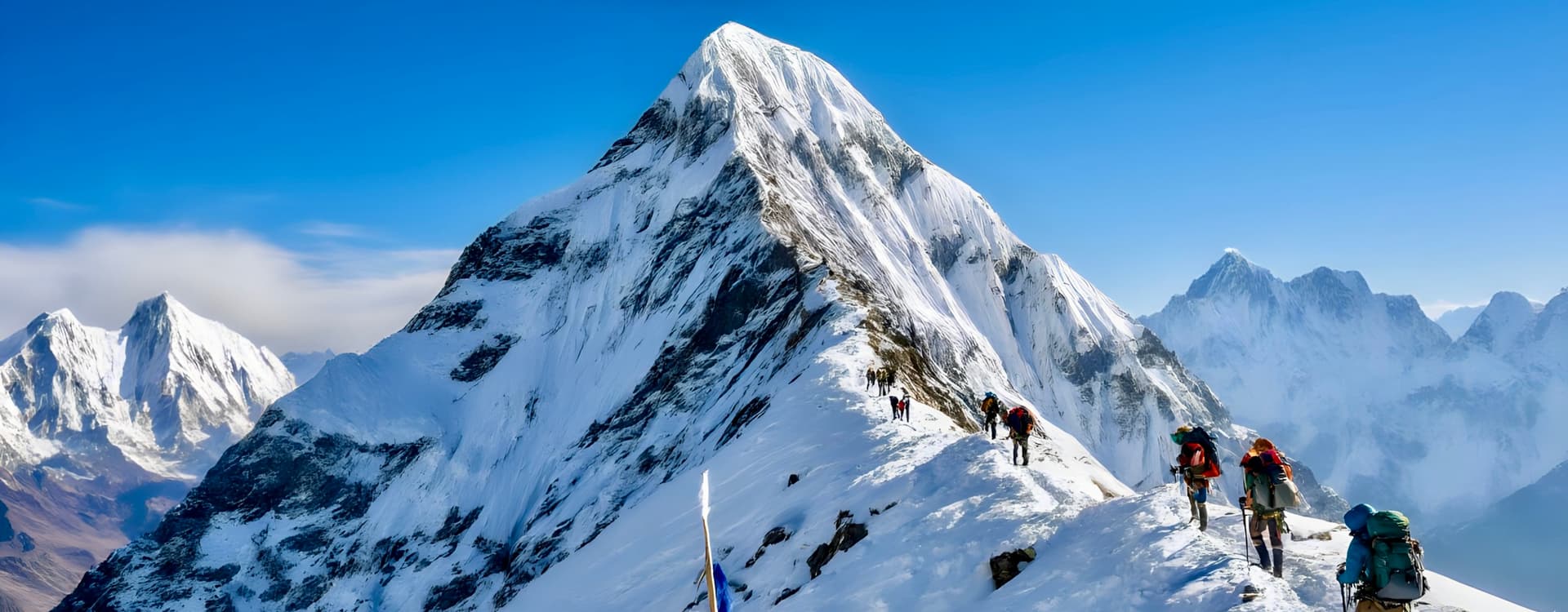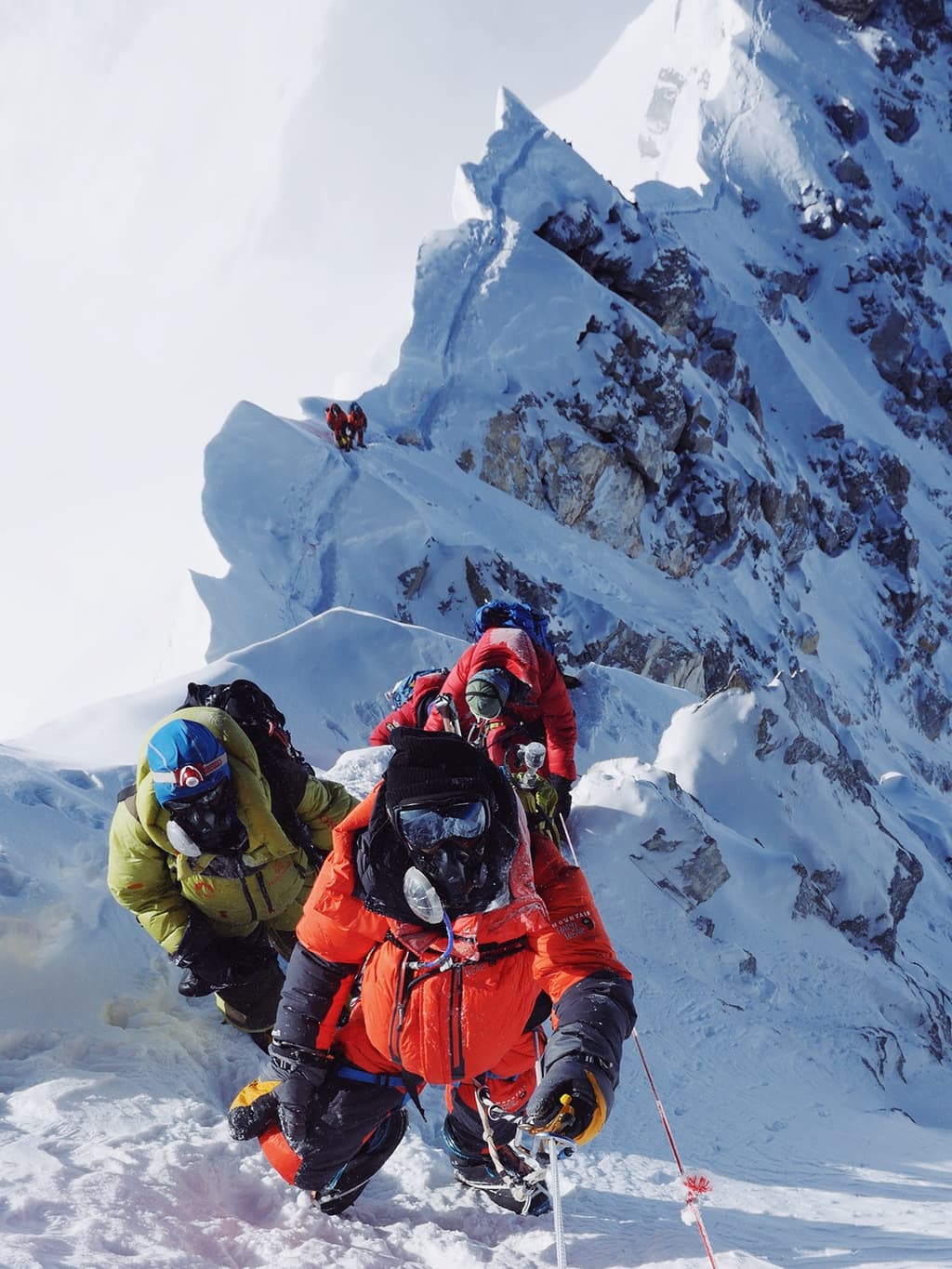Ever dreamed of conquering a Himalayan peak without the crowds and chaos of Everest? That's exactly what Chulu West offers—a 6,419m gem tucked in the Annapurna region that most trekkers haven't even heard of.

Let me guess: you're wondering if you've got what it takes, how much it'll cost, and whether the views are worth the climb. Spoiler alert: they absolutely are.
Chulu West peak climbing combines technical challenge with breathtaking scenery—think panoramic views of Annapurna, Dhaulagiri, and Manaslu that'll make your Instagram followers weep with envy.
But here's what most agencies won't tell you about climbing Chulu West: the preparation matters more than the price tag. And speaking of that price tag...
Overview of Chulu West Peak
Geographic location and features
Nestled in the Annapurna region of Nepal, Chulu West Peak stands proudly at an impressive 6,419 meters (21,059 feet). We've spent countless hours exploring this magnificent mountain that forms part of the Chulu massif, sitting just north of the famous Annapurna Circuit trail.
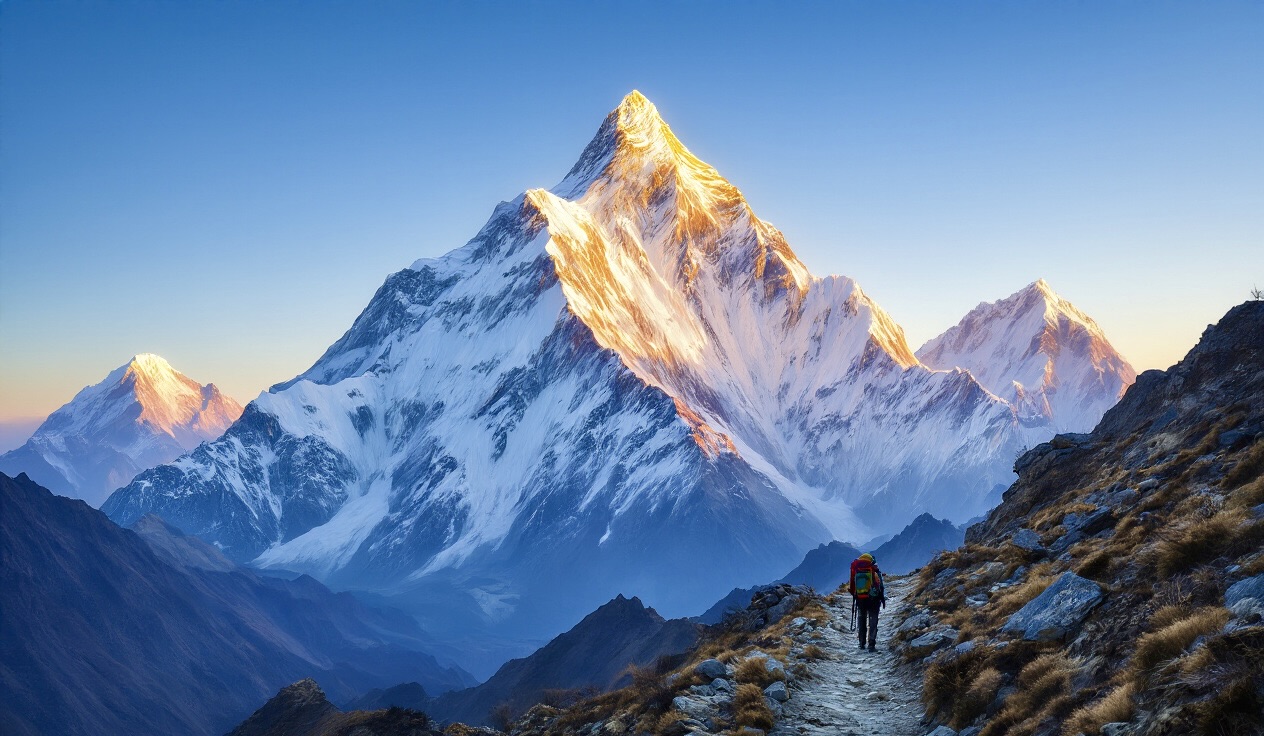
The peak rises majestically from the Manang Valley, offering breathtaking panoramic views of the Annapurna range, Dhaulagiri, Gangapurna, Tilicho Peak, and Manaslu. What makes Chulu West truly special is its position – tucked away in a less crowded area that gives climbers a more intimate experience with the Himalayas.
The approach to Chulu West takes us through diverse landscapes, from lush forests and terraced farmlands to arid high-altitude deserts. We cross the picturesque villages of the Manang region, where Tibetan-influenced culture thrives against a backdrop of towering peaks.
Climbing difficulty level
Chulu West is classified as a technically moderate climb (Alpine Grade PD+), but don't let that fool you. We consider it challenging enough to demand respect but accessible enough for determined climbers with proper preparation.
The climb involves traversing steep snow slopes that can reach up to 45 degrees in some sections. We always ensure our climbers are comfortable with using crampons, ice axes, and rope techniques before attempting the summit.
The most challenging aspects include:
- Sections of fixed rope climbing
- Navigating crevasses on the glacier
- Handling the high altitude (acclimatization is crucial)
- Dealing with potential weather changes
Best seasons for climbing
We've guided countless expeditions to Chulu West, and timing is everything. The two prime climbing windows are:
Pre-monsoon (Spring): March to May
Spring offers stable weather patterns with clear mornings and occasional afternoon clouds. The temperatures are gradually warming, and the mountain blooms with rhododendrons at lower elevations. May can get slightly warmer as it approaches the monsoon season.
Post-monsoon (Autumn): September to November
This is our favorite season for Chulu West. The skies are incredibly clear after the monsoon has washed away dust and pollution. October specifically offers the perfect balance of stable weather, comfortable temperatures, and breathtaking visibility.
Winter climbing (December-February) is possible but extremely challenging due to harsh conditions and deep snow. We generally don't recommend summer attempts during the monsoon season (June-August) due to heavy precipitation and dangerous conditions.
Comprehensive Cost Breakdown
Permit fees and documentation
Climbing Chulu West isn't just about physical preparation - your wallet needs to be ready too! The permit fees are a significant part of your budget. We require all climbers to have both the Annapurna Conservation Area Permit (ACAP), which costs around $30 and the Trekking Information Management System (TIMS) card at approximately $10. For the actual climbing permit, expect to pay between $250-$400 depending on the season.
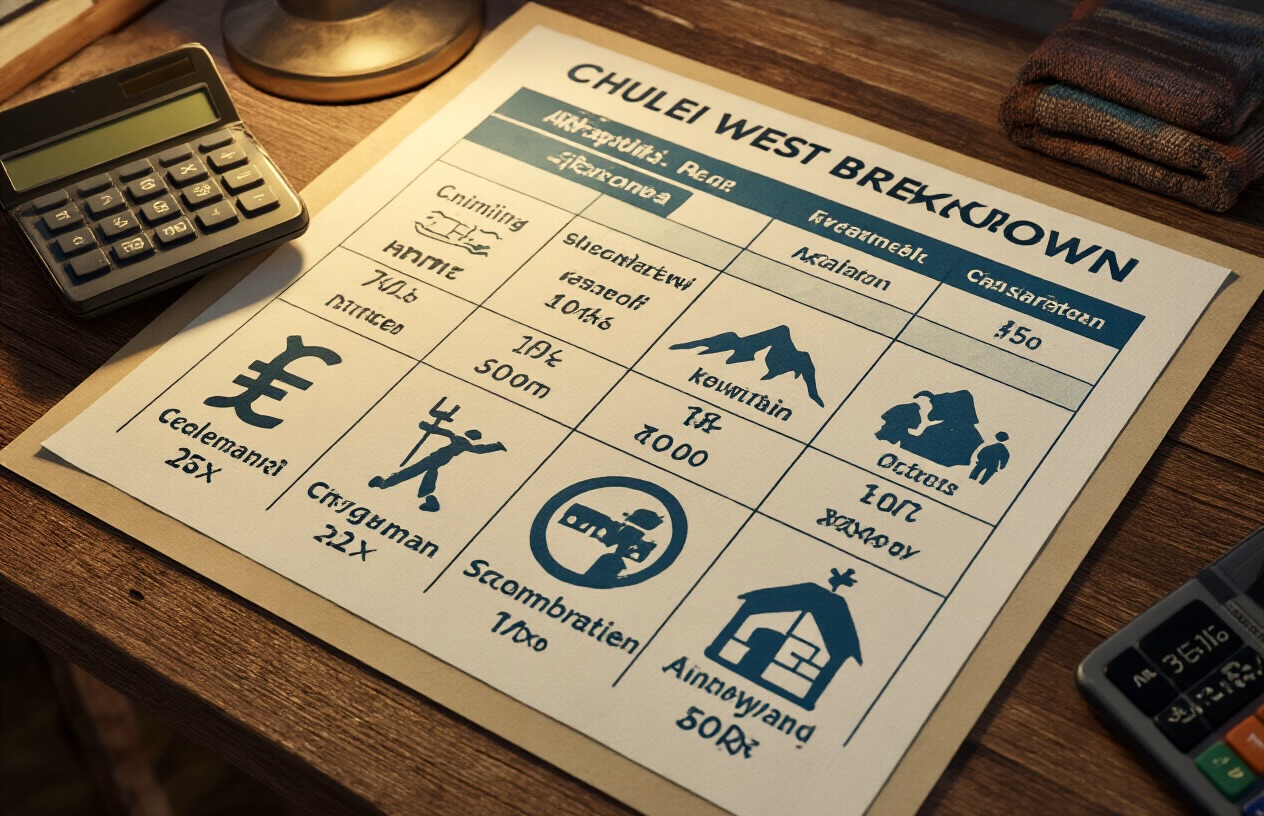
Don't forget about the paperwork! We handle most of the documentation hassle, but you'll need travel insurance that covers high-altitude mountaineering (up to 6,500m) and emergency helicopter evacuation. This typically runs between $100-$200, depending on your coverage level and duration.
Guide and porter expenses
Having the right team makes all the difference on Chulu West. Our experienced climbing guides charge $45-$60 per day, while assistant guides cost around $35-$45 daily. For porters who carry your heavy equipment, budget about $25-$30 per day.
Remember, these aren't just expenses – they're investments in your safety and success. Our guides have extensive knowledge of the mountain, weather patterns, and emergency procedures. Many have summited Chulu West dozens of times and know every tricky section.
We recommend a tipping budget of 10-15% of the guide and porter fees as a gesture of appreciation for their hard work.
Equipment rental options
Not everyone owns specialized high-altitude climbing gear, and that's totally fine! We offer rental options that can save you thousands compared to purchasing everything new.
Here's what our typical rental prices look like:
|
Equipment |
Daily Rate |
2-Week Rate |
|
Down suit |
$15 |
$120 |
|
Climbing boots |
$12 |
$100 |
|
Crampons |
$8 |
$70 |
|
Ice axe |
$7 |
$60 |
|
Harness |
$5 |
$40 |
|
Helmet |
$5 |
$40 |
|
Sleeping bag (-20°C) |
$8 |
$70 |
Our equipment is regularly maintained and meets international safety standards. We'll help you choose exactly what you need based on the season and your experience level.
Accommodation and food costs
Throughout your Chulu West adventure, you'll experience a range of accommodations. During the trek portion, teahouse lodges cost around $10-15 per night (double occupancy). At base camp and higher, the costs are included in your expedition package.
Food expenses vary depending on your appetite and preferences. In teahouses, expect to spend $20-30 daily for three hearty meals. The menu typically features dal bhat (rice and lentils), noodles, soups, and occasionally pizza or pasta at lower elevations.
At higher camps, we provide nutritious high-altitude meals designed to maintain your energy. These specialized meals and hot drinks are included in most of our packages.
Transportation expenses
Getting to and from Chulu West involves several transportation legs. From Kathmandu to Besisahar (the starting point of most treks), private jeep transport costs around $180-200 (total vehicle, not per person).
Some climbers choose to fly from Kathmandu to Pokhara ($120-150 one-way) before taking ground transportation to the trailhead. For the return journey, many clients opt to fly from Jomsom to Pokhara ($120) after completing the circuit.
We also arrange all transfers between the airport and your hotel in Kathmandu (approximately $15-20 each way).
Remember that prices for private transportation can be shared among group members, making it more economical for teams rather than solo climbers.
Detailed Day-by-Day Itinerary
Arrival in Kathmandu and Preparation
Our Chulu West expedition begins with your arrival at Tribhuvan International Airport in Kathmandu. We'll greet you at the airport and transfer you to your hotel in the vibrant Thamel area. The first day is about settling in and recovering from your flight.
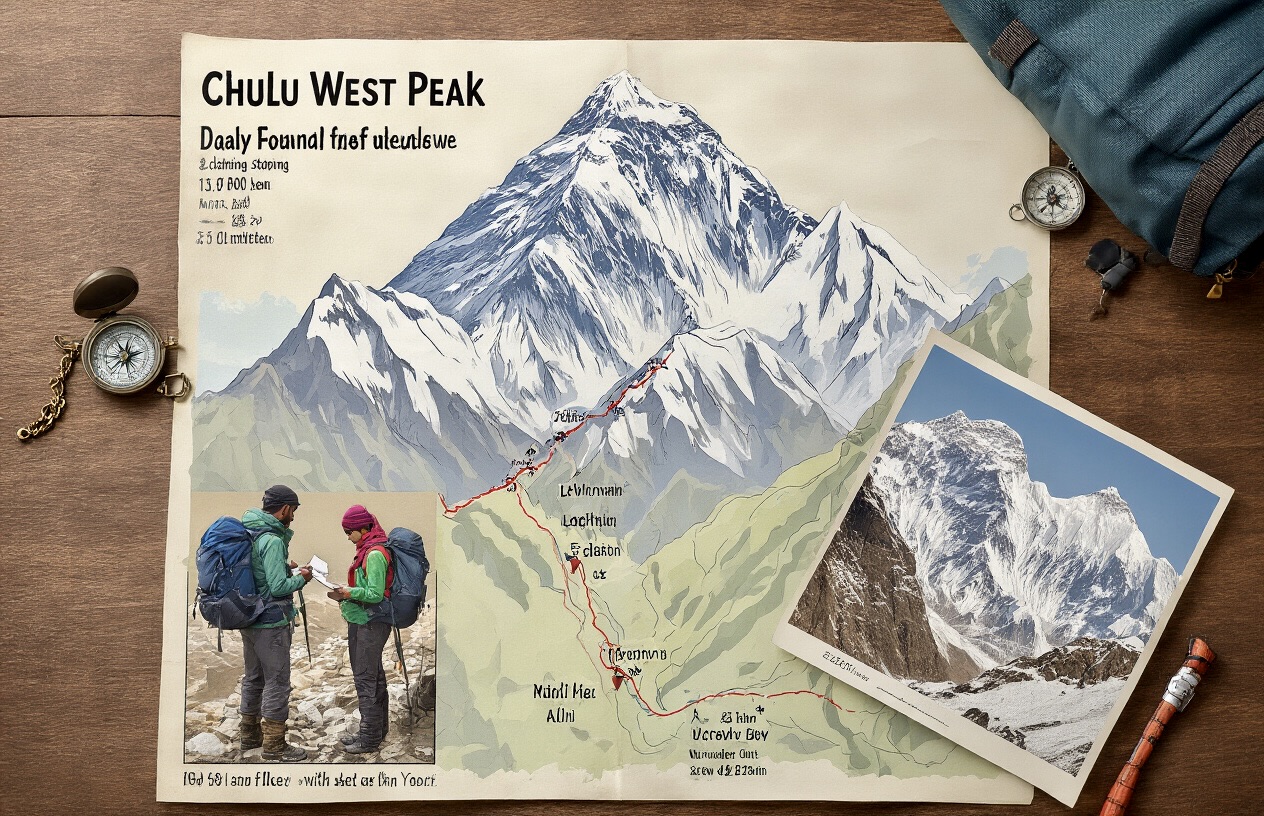
On day two, we'll handle all the necessary paperwork and permits for the climb. This includes the TIMS card and Annapurna Conservation Area Permit (ACAP). We'll also conduct a thorough gear check to ensure you have everything needed for the climb. Missing something? No worries! Thamel has countless shops where you can buy or rent quality climbing equipment.
In the evening, we'll host a welcome dinner where you'll meet the entire climbing team. This is when we'll brief you on the expedition details, discuss safety protocols, and answer any questions you might have about the journey ahead.
Journey to Base Camp
Our trek begins with a scenic 8-hour drive from Kathmandu to Besisahar. From there, we continue to Chame, the gateway to the Annapurna region. The real trekking adventure starts as we follow the famous Annapurna Circuit trail.
We'll trek through charming villages like Pisang and Manang, gradually gaining altitude while soaking in breathtaking mountain views. The trail takes us through diverse landscapes – from lush forests and terraced fields to alpine meadows.
After Manang (3,540m), we'll take a detour from the main Annapurna Circuit trail and head toward Chulu West Base Camp. This path is less traveled and offers stunning views of Annapurna II, III, and IV. We typically reach Base Camp (4,900m) after 7-8 days of trekking from Kathmandu, allowing for proper acclimatization along the way.
Acclimatization Process
Proper acclimatization is crucial for a successful and safe summit attempt. We've strategically planned rest days throughout the journey to help your body adapt to the increasing altitude.
Our first major acclimatization day happens in Manang (3,540m), where we'll take a day hike to a higher elevation and return to sleep at a lower altitude – the classic "climb high, sleep low" technique that helps stimulate your body's adaptation to altitude.
At Base Camp, we'll spend two days practicing climbing techniques, getting familiar with the equipment, and making short climbs to higher points before returning to Base Camp. During this time, our Sherpa team will be setting up Camp 1 (5,300m) with all necessary supplies.
Before moving to High Camp, we ensure everyone is showing good signs of acclimatization by monitoring for symptoms of altitude sickness and checking oxygen saturation levels.
Summit Day Plan
Summit day starts incredibly early – usually around 1:00 AM from High Camp. Climbing in the dark hours might seem daunting, but it allows us to reach the summit during the morning hours when weather conditions are typically most favorable.
The climb involves navigating steep snow slopes (30-50 degrees) using fixed ropes installed by our experienced Sherpa team. The route requires good crampon and ice axe techniques, which we'll have practiced during our acclimatization days.
As we approach the summit ridge, the panoramic views become increasingly spectacular. The final push to the summit (6,419m) rewards us with breathtaking 360-degree views of the entire Annapurna range, Dhaulagiri, Manaslu, and countless other Himalayan peaks.
We limit our time at the summit to about 30 minutes – enough for photos and celebration but not so long that we risk afternoon weather changes. The descent requires equal focus and care, using rappelling techniques on the steeper sections.
Descent and Return Journey
After our summit success, we begin our descent back to High Camp, where we rest briefly before continuing down to Base Camp. The next day, we pack up Base Camp and begin our return journey, following a slightly different route than our ascent.
Instead of retracing our steps completely, we continue on the Annapurna Circuit trail toward Thorong La Pass and then down to Muktinath – a holy temple significant to both Hindus and Buddhists. This route offers new scenery and completes a partial circuit of the Annapurna range.
From Muktinath, we descend to Jomsom, where we catch a scenic flight to Pokhara, saving several days of trekking. We spend a night in Pokhara, Nepal's beautiful lakeside city, before returning to Kathmandu by either flight or tourist bus.
Back in Kathmandu, we celebrate our achievement with a farewell dinner, sharing memories and experiences from our incredible journey. The following day, we arrange your transfer to the international airport or help with any extensions to your Nepal stay you might desire.
Essential Preparation Guidelines
Physical fitness requirements
Let's be clear – climbing Chulu West isn't a walk in the park. At 6,419 meters, this peak demands serious physical preparation. We've seen climbers struggle when they underestimate the challenge.

You'll need excellent cardiovascular endurance to handle the thin air and long ascent days. Strong leg muscles are crucial for those steep sections, while core strength helps with balance when carrying your pack on uneven terrain.
Before attempting Chulu West, we recommend being able to:
- Hike 6-8 hours with a 10kg backpack
- Climb stairs for 1 hour without major fatigue
- Run 5km comfortably
- Complete multiple consecutive days of physical activity without recovery days
The truth? Many climbers focus only on cardio but neglect upper body and core strength. Big mistake. You'll need all-around fitness to handle the technical sections where you'll be using ice axes and navigating across snow slopes.
Recommended training schedule
We suggest starting your training at least 4 months before your climb. Here's the schedule our most successful climbers follow:
4 Months Before:
- 3-4 cardio sessions weekly (30-45 minutes)
- 2 strength training sessions
- Weekend hike (2-3 hours)
2-3 Months Before:
- 4 cardio sessions (45-60 minutes)
- 2-3 strength sessions
- Weekend hike with loaded backpack (4-5 hours)
- Stair climbing or hill repeats twice weekly
Final Month:
- 4-5 cardio sessions (60+ minutes)
- 2 strength sessions
- Back-to-back weekend hikes with full pack
- Practice with climbing gear if possible
The key? Consistency beats intensity. We've guided hundreds of climbers, and those who train steadily for months outperform those who cram intense workouts just before the trip.
Altitude sickness prevention
Altitude sickness can derail even the fittest climbers. Our itinerary includes proper acclimatization days, but you need to do your part, too.
First rule: climb high, sleep low. We'll take day hikes to higher elevations and return to lower altitudes for sleeping.
Hydration is non-negotiable. Drink at least 4-5 liters daily once above 3,000m. Your urine should remain clear or light yellow.
We strongly recommend starting Diamox (Acetazolamide) 24 hours before reaching higher altitudes, but only after consulting your doctor. The typical dosage is 125mg twice daily.
Other prevention strategies we follow:
- Gradual ascent (no more than 500m sleeping altitude gain per day)
- Rest days every 1,000m of elevation gain
- High-carb, low-salt diet during the climb
- Avoiding alcohol and sleeping pills
Remember, there's no shame in turning back if symptoms persist. We've seen too many climbers push through warning signs only to require emergency evacuation later.
Equipment and Gear Checklist
Climbing Equipment Essentials
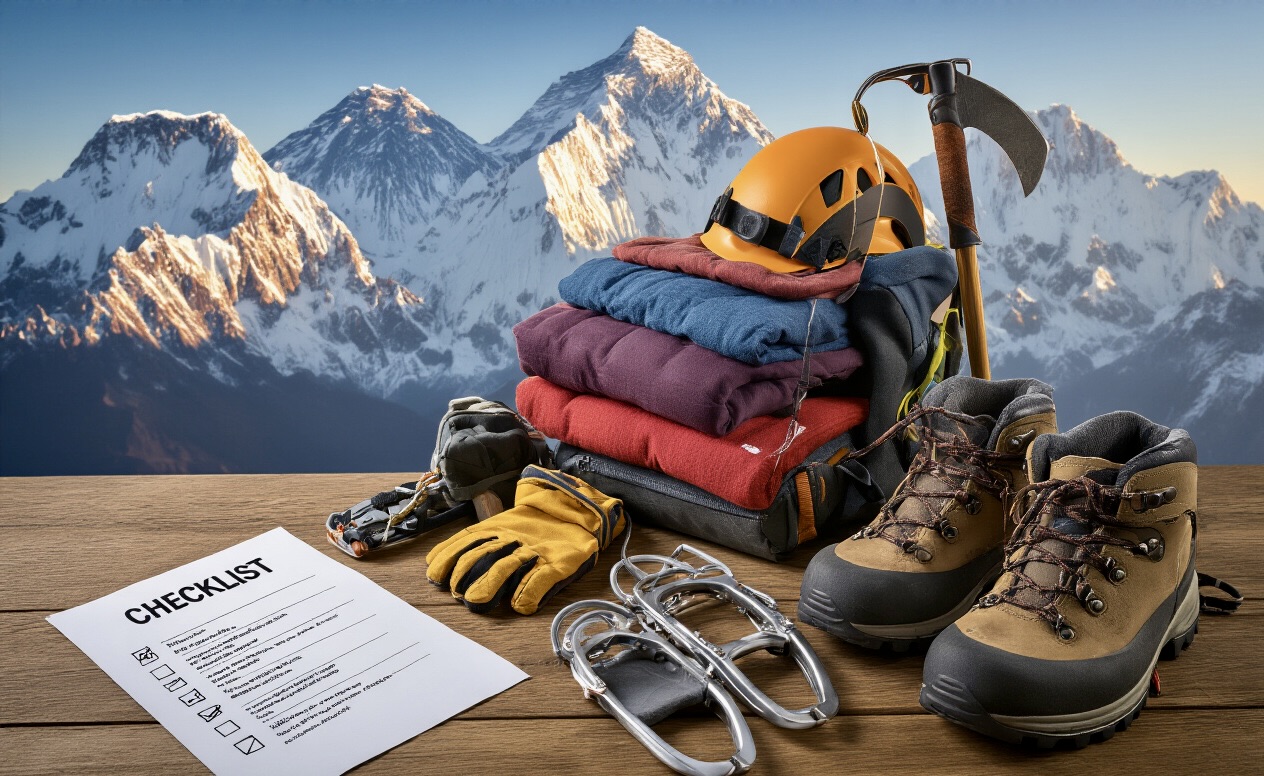
For conquering Chulu West Peak, we've compiled a must-have list of technical gear:
- Ice axe: A reliable companion for stability and self-arrest
- Crampons: 12-point crampons that fit your boots perfectly
- Climbing harness: Comfortable with adjustable leg loops
- Carabiners: 4 locking and 4 non-locking options
- Jumar/ascender: Essential for fixed rope sections
- Descender/belay device: ATC or figure 8 for controlled descents
- Prussik cords: 2-3 pieces for emergency situations
- Climbing helmet: Lightweight but sturdy protection
- Trekking poles: Collapsible for easy packing
We always recommend renting specialized equipment in Kathmandu rather than purchasing everything new. Many of our climbers save hundreds of dollars this way, and the rental gear quality is excellent.
Clothing Recommendations
The key to comfort on Chulu West is layering:
Base Layers:
- 2-3 moisture-wicking thermal tops
- 2 pairs of thermal leggings
- 4-5 pairs of trekking socks plus 2 pairs of thick summit socks
Mid Layers:
- Fleece jacket or pullover
- Softshell pants
- Lightweight down jacket
Outer Layers:
- Waterproof and windproof jacket with hood
- Waterproof pants
- Heavy down jacket for summit day
- Insulated climbing pants
Extremities:
- Warm hat covering ears
- Balaclava or buff
- Sunhat with brim
- Glacier sunglasses (category 4)
- Goggles for windy conditions
- Liner gloves
- Heavy insulated mittens
- Warm trekking gloves
Personal Items and Medications
Staying healthy and comfortable is crucial for summit success:
Personal Care:
- Sunscreen (SPF 50+)
- Lip balm with SPF
- Personal first aid kit
- Wet wipes and hand sanitizer
- Quick-dry towel
- Toilet paper
- Headlamp with spare batteries
- Water purification tablets
Medications:
- Diamox for altitude sickness (consult your doctor first)
- Pain relievers (ibuprofen/paracetamol)
- Broad-spectrum antibiotics
- Anti-diarrheal medication
- Throat lozenges
- Blister treatment supplies
- Rehydration salts
Other Essentials:
- Durable water bottles (2 liters capacity total)
- Insulated water bottle for summit day
- Camera with extra batteries
- Power bank
- Sleeping bag liner
- Pee bottle for night use (trust us, you'll want this)
- Favorite snacks from home
We've seen many climbers struggle without proper gear, so don't skimp on these essentials. Your comfort and safety depend on being properly equipped for the challenging conditions on Chulu West.
Why Choose Everest Sherpa Expeditions
Experience and expertise
When it comes to conquering Chulu West Peak, you need guides who've been there, done that. We've been leading expeditions in the Himalayas for over 15 years, with our team of local Sherpa guides who were born and raised in these mountains. This isn't just a job for us—it's our heritage.
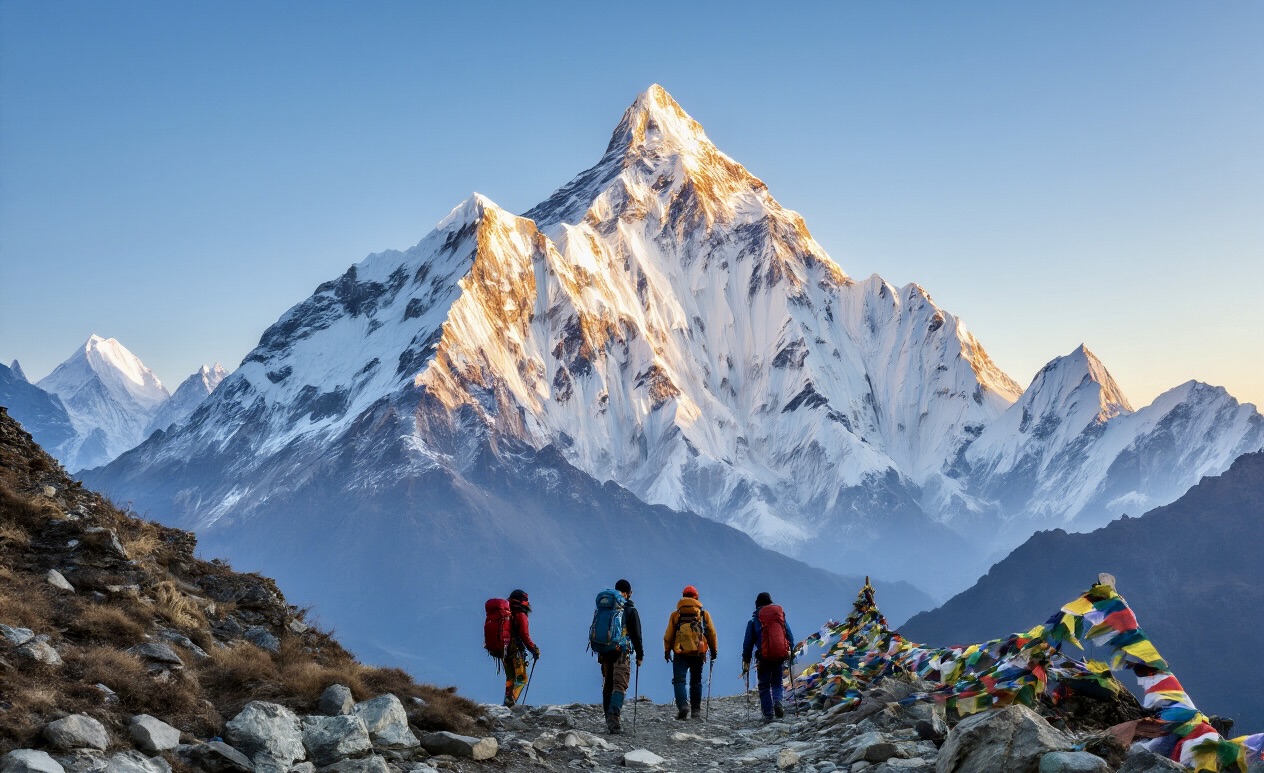
Our lead climbers have summited Chulu West more than 50 times combined, and they know every crevasse, every weather pattern, and every challenge this beautiful 6,419m peak presents. We don't just follow maps; we understand the mountain's moods and rhythms.
Safety record and procedures
Your safety isn't just our priority—it's our obsession. We maintain a spotless safety record on Chulu West because we never cut corners. Before each expedition, we conduct thorough equipment checks and personalized fitness assessments.
Our 3:1 client-to-guide ratio exceeds industry standards, ensuring you receive proper attention throughout your climb. We carry state-of-the-art satellite communication devices, comprehensive medical kits, and oxygen supplies on every expedition.
We're also proud members of the Himalayan Rescue Association, with all guides certified in wilderness first aid and high-altitude emergency response.
Client testimonials
Don't just take our word for it. Our climbers consistently rate their Chulu West experience with us as exceptional:
"The difference with Everest Sherpa Expeditions was night and day. Their attention to detail made me feel secure, while their genuine passion for the mountains made the journey unforgettable." — Sarah K., Australia
"After climbing with three different companies in Nepal, I can confidently say nobody matches the professionalism and warmth of this team." — Marco T., Italy
Special services and amenities
We go beyond the standard package to make your Chulu West adventure truly special:
- Pre-climb acclimatization program customized to your experience level
- Premium sleeping bags and down jackets provided at no extra cost
- Portable shower systems at base camp
- Fresh, varied meals prepared by our expedition chefs
- Free gear storage in Kathmandu during your climb
- Complimentary post-climb massage to soothe those tired muscles
We also arrange private helicopter evacuations if needed—something many operators charge extra for or don't offer at all.
Frequently Asked Questions
Climbing permits and regulations
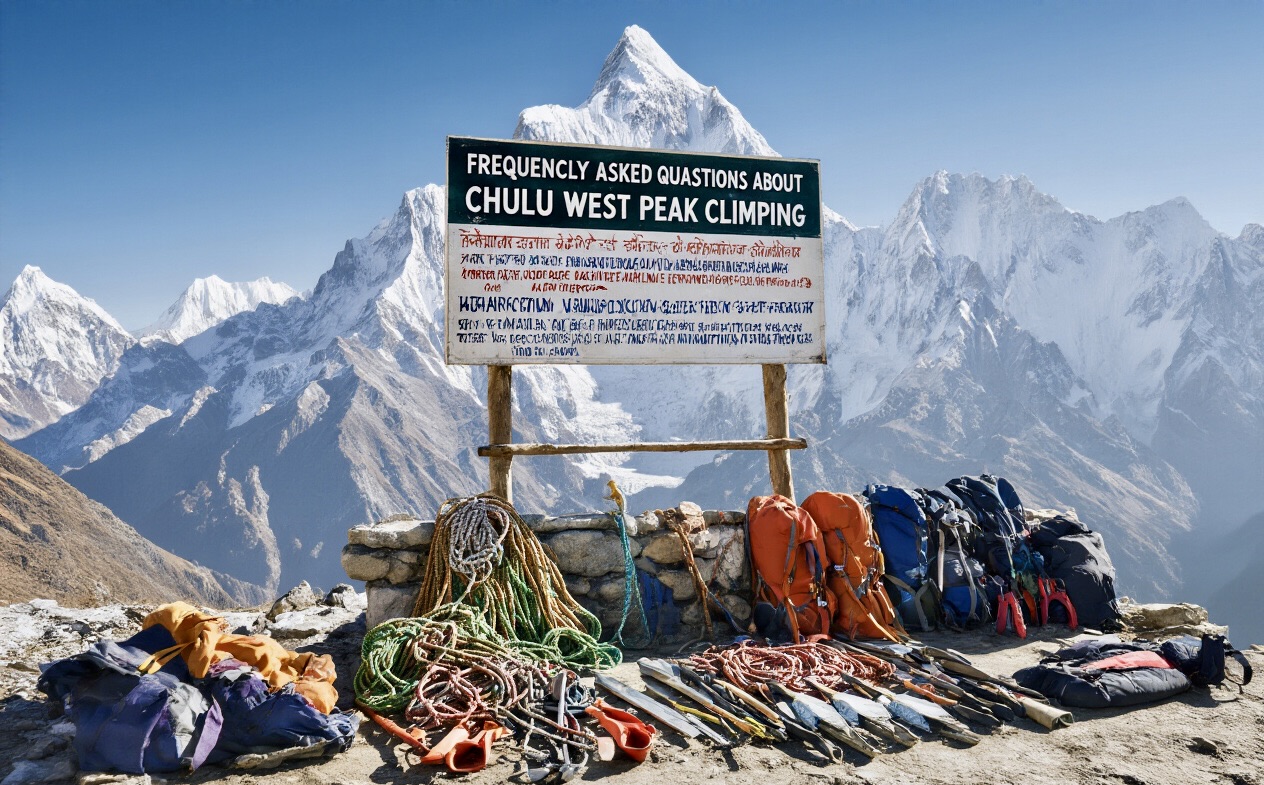
Getting permits for Chulu West isn't complicated, but it's definitely something you need to plan ahead. We require two main permits for all our climbers:
- TIMS Card (Trekkers' Information Management System) - $10 per person
- Annapurna Conservation Area Permit (ACAP) - $30 per person
- Climbing Permit - $250 per person in spring/autumn, $125 in winter/summer
The Nepal Mountaineering Association (NMA) issues the climbing permit, and we handle all the paperwork for you. Our team submits your passport details, insurance documentation, and climbing history about 3-4 weeks before departure.
Remember, these permits aren't just formalities - they help protect the region and support local communities. The rules are pretty straightforward: stay on designated routes, respect local customs, and follow Leave No Trace principles.
Success rates and challenges
Chulu West has about a 75% success rate among our clients. Not too shabby for a 6,419m peak! But let's be real - this mountain throws some serious challenges your way.
The biggest hurdles we see climbers face include:
- Altitude sickness - The rapid ascent can be tough on your body
- Technical sections - Those ice and snow slopes require solid crampon and ice axe skills
- Weather windows - Sometimes Mother Nature just doesn't cooperate
- Physical fitness - That final push demands everything you've got
We've found that climbers who succeed typically spend 3-4 months on targeted training before arrival and take the acclimatization schedule seriously. The summit day is long (10-12 hours round trip), so mental stamina matters just as much as physical preparation.
Emergency protocols
Your safety is our absolute top priority on Chulu West. We've developed comprehensive emergency procedures that kick in immediately if things go sideways:
Our standard protocol includes:
- Satellite phones and radio communication at all camps
- Oxygen supplies and medical kits with each group
- Pre-established evacuation routes and helicopter landing zones
- Guides trained in wilderness first aid and high-altitude medicine
If you develop severe altitude sickness or suffer an injury, we don't mess around. Our team initiates immediate descent when necessary and can arrange helicopter evacuation from various points along the route. We require all climbers to have comprehensive travel insurance that covers high-altitude rescue (up to 7,000m) and medical evacuation.
Customization options
No two climbers are exactly alike, which is why we offer several ways to tailor your Chulu West experience:
- Private guides - Want more personalized attention? We can arrange a 1:1 guide ratio
- Extended acclimatization - Add extra days in key locations to improve your summit chances
- Combined itineraries - Pair your climb with Thorong La Pass or a full Annapurna Circuit trek
- Equipment rentals - Don't have specialized gear? Rent quality equipment from us
- Training support - Get pre-trip training plans customized to your fitness level
Many of our clients also request special dietary accommodations, which we're happy to arrange with advance notice. Vegetarian, vegan, gluten-free - our kitchen team can handle it all. Just remember that customizations may affect the overall trip cost, but we're always transparent about any additional fees.
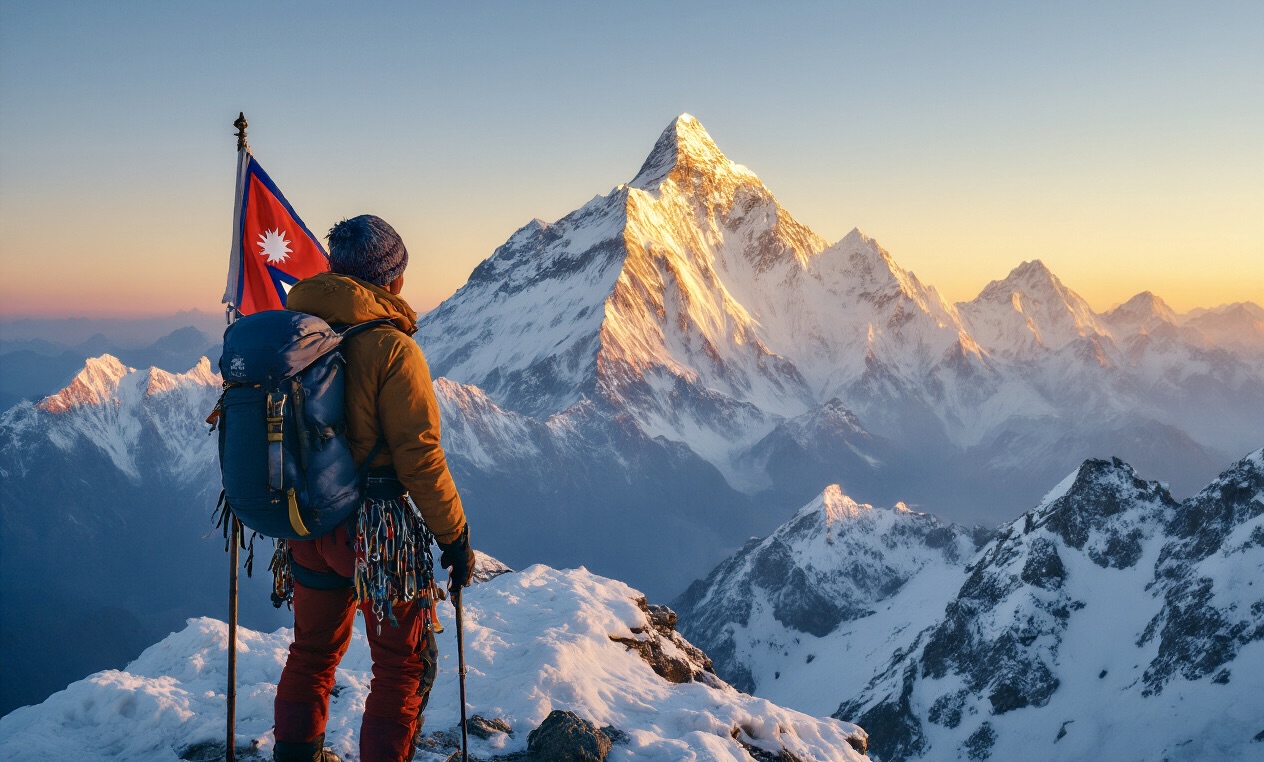
Climbing Chulu West Peak offers a remarkable high-altitude adventure in the Annapurna region that combines technical challenges with breathtaking Himalayan scenery. From the comprehensive cost breakdown to the carefully crafted day-by-day itinerary, we've provided everything you need to prepare for this rewarding expedition. With proper preparation, essential gear, and the right mindset, this journey will test your limits while rewarding you with unforgettable panoramic views and a profound sense of achievement.
At Everest Sherpa Expeditions, we're committed to making your Chulu West Peak climb safe, memorable, and successful. Our experienced guides, quality equipment, and attention to detail ensure you'll have the support needed throughout this adventure. Whether you're planning your first Himalayan peak or adding to your mountaineering experience, we invite you to join us for this extraordinary journey.
Contact us today to book your Chulu West expedition and take the first step toward conquering this magnificent Nepalese peak.
If you need any further information, please contact us by email: [email protected], Phone: +977- 980 195 6248 (WhatsApp).
